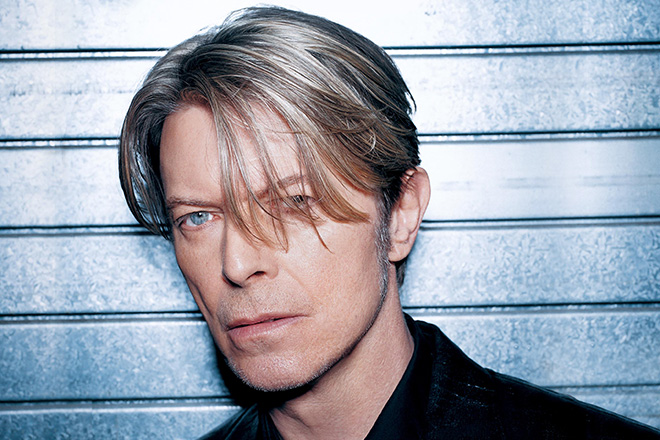
WRITTEN BY: DAVID BOWIE
RECORDED: TRIDENT STUDIOS, LONDON
PRODUCED BY: GUS DUDGEON
DAVID BOWIE: VOCALS, ACOUSTIC GUITAR,
STYLOPHONE
HERBIE FLOWERS: BASS
TERRY COX: DRUMS
MICK WAYNE: ELECTRIC GUITAR
RICK WAKEMAN: MELLOTRON, PIANO
PAUL BUCKMASTER: STRINGS
FROM THE ALBUM: DAVID BOWIE (1969)
“Space Oddity”
DAVID BOWIE
In the dark of London’s Cinerama theater, 22-year-old David Bowie stared at the space embryo floating across the theater’s huge 70 mm screen. It was the summer of 1968, and this was his third time watching 2001: A Space Odyssey. “It was the sense of isolation I related to,” Bowie said. “I found the whole thing amazing. I was out of my gourd, very stoned when I went to see it, and it was really a revelation to me. It got the song flowing.”
While Stanley Kubrick’s film provided the setting and title for Bowie’s first Top 10 hit, other inspirations helped shape the song. That summer, Bowie was hooked on Simon and Garfunkel’s Bookends album—especially “Old Friends,” whose breezy chords he borrowed for the “tin can” section of his song. More significant was the downward spiral of Bowie’s relationship with girlfriend Hermione Farthingale. “It was Hermione who got me writing for a specific person,” Bowie said. The lonely void that Bowie felt in her absence found its perfect metaphor in the marooned space capsule of Major Tom.
With the song complete, Bowie cut a demo in late 1968 for the short promotional film Love You Till Tuesday. That version, thin and reedy, with Bowie mimicking the spaceship sounds himself, failed to make commercial waves. But it landed him a contract with Mercury. The first order of business was to record a proper full-on version. Bowie assumed that he’d be working with his usual producer, Tony Visconti. But Visconti hated the tune, calling it “a cheap shot—a gimmick to cash in on the moon shot.” Into the breach leapt Visconti’s young engineer Gus Dudgeon.
Recorded on June 20, 1969, at London’s Trident Studios, the song was plotted with the precision of a space launch. From the well-timed entrances of Herbie Flowers’ bass and Rick Wakeman’s Mellotron to the controlled chaos of the lift-off and the spooky distress calls dotting the outro, the clever arrangement propelled the song into an atmosphere far beyond the demo. The song’s majesty is even more remarkable when you consider the session cost under $750, with the musicians making just over $15 each. Dudgeon mixed the track in stereo, almost unheard of for radio singles at the time the new iPhone app “Remix David Bowie–Space Oddity” allows one to match skills with Dudgeon.
The record was rush-released on July 11, nine days ahead of the Apollo 11 moon landing. The song got little play in the States but the reception in England was far warmer. “It was picked up by British television and used as the background music for the landing itself,” Bowie said. “Though I’m sure they really weren’t listening to the lyric at all. Of course, I was overjoyed that they did. Obviously, some BBC official said, ‘Oh, right then, that space song, Major Tom, blah blah blah, that’ll be great.’ Nobody had the heart to tell the producer, ‘Um, but he gets stranded in space, sir.’” “Space Oddity” remains Bowie biggest-selling single in the U.K. It won the Ivor Novello Award in 1969. Though there were a few commercial bumps in the years following, it was kind of a scouting mission for the worldwide fame that would come in 1972 with the extraterrestrial Ziggy Stardust. It has since been covered by many artists, including Def Leppard, Tangerine Dream and Cat Power, and featured in the video game Rock Band 3.
Intergalactic lullaby, break-up tune, NASA tie-in, “Space Oddity” had it all—a five-minute, wildly inventive story song that christened Bowie’s fertile decade of pioneering pop.
–Bill DeMain



comment closed